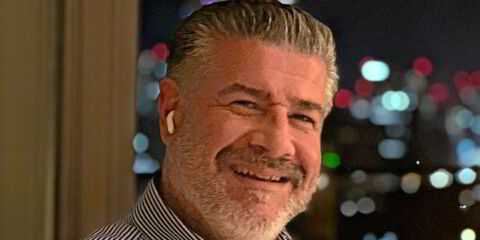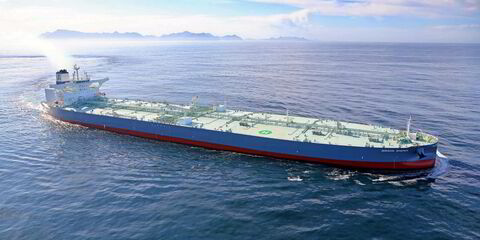Teekay offshoot Tanker Investments Ltd (TIL) is finished raising equity for the near term and will acquire its next handful of vessels with the remainder of its revolving credit facility.
That was the word this week from chief executive William Hung and chief financial officer Scott Gayton in an interview on the sidelines of Posidonia 2014.
Gayton acknowledged that TIL has heard some criticism that it has been overexuberant in its equity raising to date, which has yielded $425m in two Oslo offerings — first on the over-the-counter (OTC) market and then with a full exchange listing.
“We have a $150m war chest and and will use that to grow the fleet with, for example, four aframaxes or three suezmaxes,” Gayton said. “There will be no new equity issued in that effort. One could argue that we’ve raised too much equity, and we’re sensitive to that and looking to get into a better balance.”
TIL’s near-term target is to carry a 35% to 45% net-debt-to-capitalisation ratio, which he calls a “relatively conservative target”.
If TIL is accused of raising too much equity, it is a high-class problem to have and one that some competitors might aspire to share, now that the taps have been turned tighter on investor contributions to crude-sector acquisitions.
TIL pounced with its $250m OTC raise in December and added $175m in March with the Oslo listing.
Over that time, the owner, with a mission to exploit crude-tanker valuations at low-cycle levels, has gone from no ships to the present tally of 13.
TIL’s timing looks to have been deft, as investor appetite for crude-tanker acquisition vehicles waned by April.
The Teekay offshoot has acquired five aframaxes, four suezmaxes and, most recently, a pair of long-range-one (LR1) tankers from Diamond S Shipping and two VLCCs originally in the fleet of Nobu Su’s Today Makes Tomorrow (TMT).
The 320,000-dwt A Elephant and E Elephant (both built 2010) had been acquired by Teekay sibling Teekay Tankers (TNK) and then sold on to TIL for $154m en bloc.
The move can be viewed as a one-off transaction, as TIL probably will not dabble in VLCCs again, instead returning to its core focus on aframaxes and suezmaxes, Hung says.
Besides timing, why was TIL so popular with investors? Hung and Gayton cite both the Teekay franchise name and its pledge to bring the vehicle public quickly.
Although Teekay has four other listings in New York, there were factors that made Oslo the choice in this case as Gayton explains.
“We were dealing primarily with distressed-debt investors,” Gayton said. “We promised them we would go public in two months. Oslo was the choice for a number of reasons.
“First, we were able to do the OTC deal there. And then, we like the investor base there — we feel they get shipping more quickly than in New York. We thought it was still a little bit early for a regular crude equity offering in New York.
“We found distressed buyers were willing to come to Oslo for the deal and they were really agnostic whether we listed in Oslo or New York. It does seem things have changed. New York in the last [IPO] cycle was really the only place to be. Now, a place like Oslo is a legitimate alternative. And it does differentiate us somewhat from the other Teekay companies since we already have four in New York.”
The TIL executives dismissed the criticism that TIL was necessary only because another Teekay spin-off, TNK, had been constrained by its balance sheet from pursuing countercyclical acquisitions along the same lines.
“I don’t think it was within the mission of TNK to grow to 20 or 25 ships and then sell everything,” Gayton said.
“I don’t think it could have happened even if it was the greatest [balance sheet] out there.”
The assessment highlights TIL’s special-purpose mission within the Teekay framework — it is not a company built for the long term.
“We’re still in buying mode right now,” Hung said.
“Valuations are still favourable and the opportunities are still there. But when the window closes and when the market gives us the opportunity, we will sell everything. It could be in one en-bloc transaction or it could be in stages — whatever is most favourable.”



